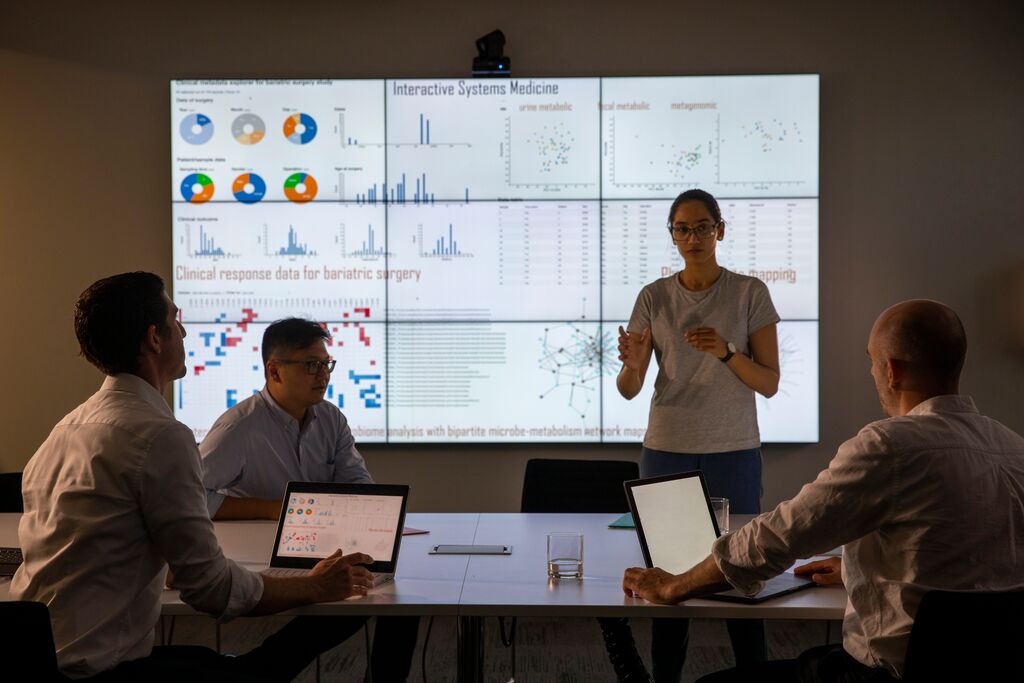In adversity, one only needs to look a little further to find the silver lining. The Covid pandemic, which brought in-person engagement to a standstill, also provided the perfect sandbox to test new digital engagement approaches. Pharma responded with digital as a cornerstone for launches. Digital key opinion leader identification and national broadcasts, as well as virtual healthcare provider (HCP) training, detailing, and conferences, featured strongly.
A stakeholder engagement ecosystem developed, with new channels, players, and partnerships. By 2022, brands had increased their spending on live remote and digital “on demand” engagements to 16% of the measured channel mix, up from only 6% in 2019, pre-pandemic. In this “all or nothing” situation, customers grew more receptive to digital. As a result, customer identification, awareness building, and relationship development continued, ensuring that innovative products continued to reach HCPs and benefit patients.
HCP Engagement Preferences in the New “Normal”Fast forward to today’s post-Covid world, HCPs have emerged with a clearer sense of their preferences. Globally, the number of interactive engagements with HCPs is still far below pre-pandemic levels, except in the US. What is evident is that while the preference for face-to-face (F2F) engagement is slowly returning to pre-Covid levels, the preference for digital engagement has grown and sustained. In addition, the field force is starting to leverage digital (eg, email) to orchestrate HCP engagement across channels (eg, streaming online content). To add further, in 2023, nearly 76% of HCPs reporting emails indicate that a link to such content was included and nearly 50% of respondents stating that they were made aware of streaming online content via emails from reps. This is particularly important in APAC where HCPs show the highest preference for digital engagement post-covid, fuelled by digital transformation.
Globally, the number of interactive engagements with HCPs is still far below pre-pandemic levels, except in the US. HCPs in APAC region show the highest preference for digital engagement post-Covid, fueled by the digital transformation.
Note: F2F includes F2F detailing and F2F meetings; remote includes phone detailing, e-detailing (live), and e-meetings (live). APAC includes Australia, China, India, Korea, New Zealand, and Taiwan; EU4+UK includes France, Germany, Italy, Spain, and the UK; Middle East includes Algeria, Egypt, Morocco, and Saudi Arabia; and North America includes Canada and the USA.
Source: IQVIA Channel Dynamics, 2019—MAT Jan 2024.
Learning from Emerging Asia, HCPs show a high preference for digital engagement for new product launches. Digital channels, such as email and video platforms, act as force multipliers to enable consistent engagement for F2F. However, while an IQVIA analysis suggests that, globally, excellent launches (identified as per IQVIA TL Launch Excellence Methodology) have a superior volume of 1:1 interactive engagement, HCP enthusiasm to engage declined between 2022 and 2023 in Emerging Asia.
While digital remains a strong complement for F2F engagement, HCPs in Emerging Asia preferred to engage less frequently in 2023 than in 2022. Note: Emerging Asia includes Indonesia, Malaysia, Philippines, Singapore, Thailand, and Vietnam. Source: IQVIA WellTrack Report 4, 2023
In addition, today’s stakeholder engagement ecosystem has expanded rapidly to include multiple independent partner channels (eg, HCP social networks, medial education platforms, telehealth, etc.) for HCPs to stay medically updated, network, and build eminence. A double-edged sword, content discoverability is a growing challenge for HCPs as they navigate this fragmented, complex ecosystem of channels.
Source: IQVIA
What Next for Pharma Launches?In this environment, pharma must find a way to deliver more meaningful engagement across fewer touchpoints. Launch engagement must be preference led, supporting content discoverability, trust, and self-service.
Source: IQVIA.
No matter where your organization is in its journey, these 3 actions will help you unlock the full potential of your organization’s launch stakeholder engagement strategy.
-
Invest to Understand Physical and Digital
Excellent launches have a superior volume of 1:1 interactive engagement, where both digital and F2F engagement are important. This requires pharma to reach HCPs through a diversified channel mix. While F2F engagement resonates across countries, digital preferences are more nuanced and influenced by digital maturity, cultural differences, and therapy areas. Invest in understanding HCP preferences at the country level to refine your value proposition and tailor your channels to increase impact.
-
Use Digital and AI to Personalize Engagement
HCPs expect every interaction to be valuable. Lack of tailored content and discoverability are growing challenges for HCPs. Organizations need to leverage digital and artificial intelligence (AI) tools to enable HCP engagement that is orchestrated, personalized, and omnichannel. Real-time customer insights (eg, AI insights, Next Best Action) in the hands of marketers and the field force will drive precision targeting and orchestrate the omnichannel experience.
-
Going Beyond Traditional Channels
HCPs place greater trust in independent sources. While continuing to invest in platforms for first-party data collection, organizations should go beyond these traditional channels. By adopting an ecosystem approach, content discoverability and credibility among HCPs can be enhanced. Organizations can also leverage the rising popularity of HCP social networks as last-mile solutions to amplify their share of voice across large geographies and use medical education platforms to meet growing demand for online postgrad/CMEs.
Transform toward personalized, orchestrated, and value-driven HCP engagement with digital solutions for launch success in APAC today.
Are you interested in exploring this subject further? Let us connect.
Look out for part II of our Digital Launch Excellence series where we will explore how data, digital and AI drive competitive advantage for launches.


























